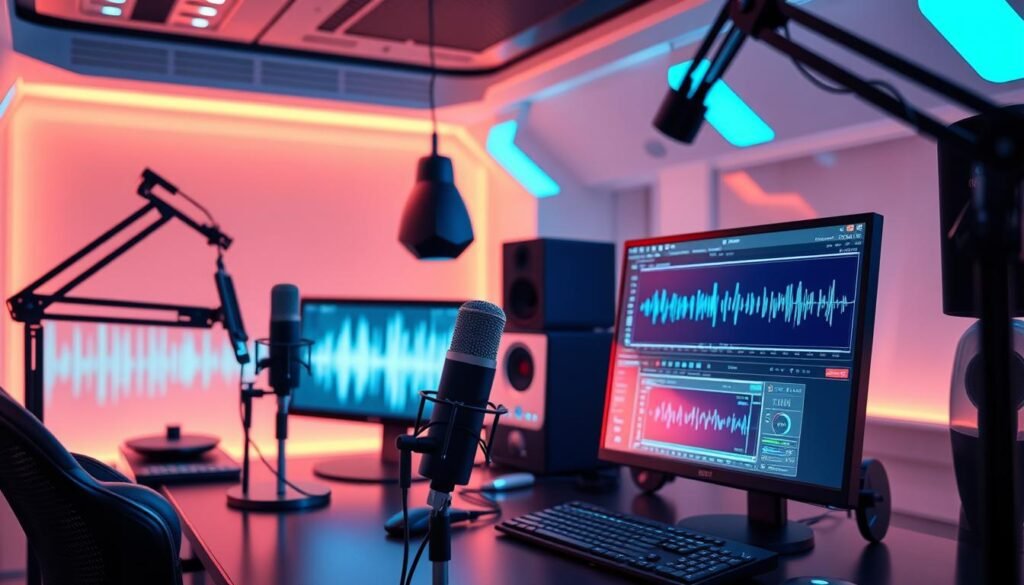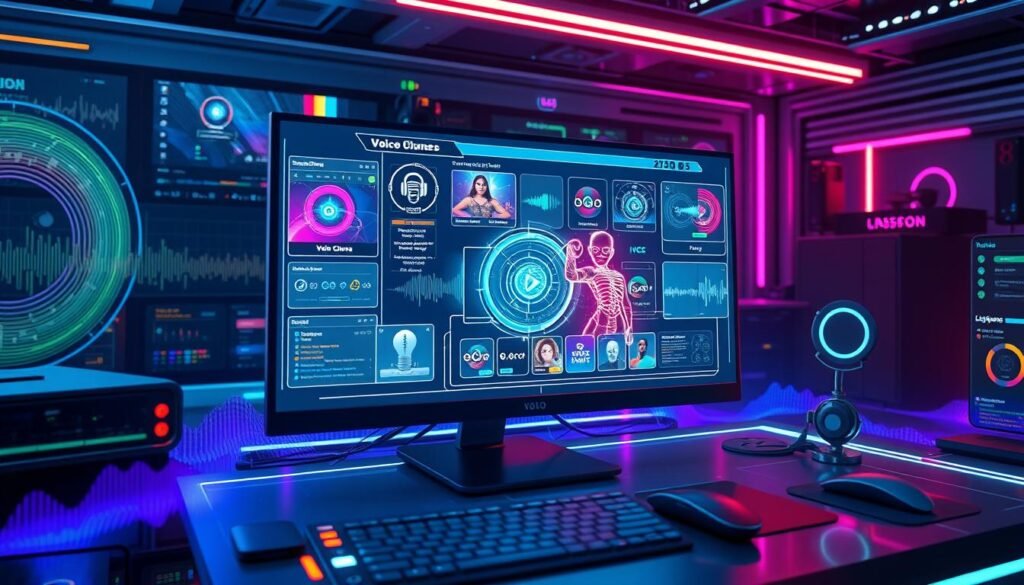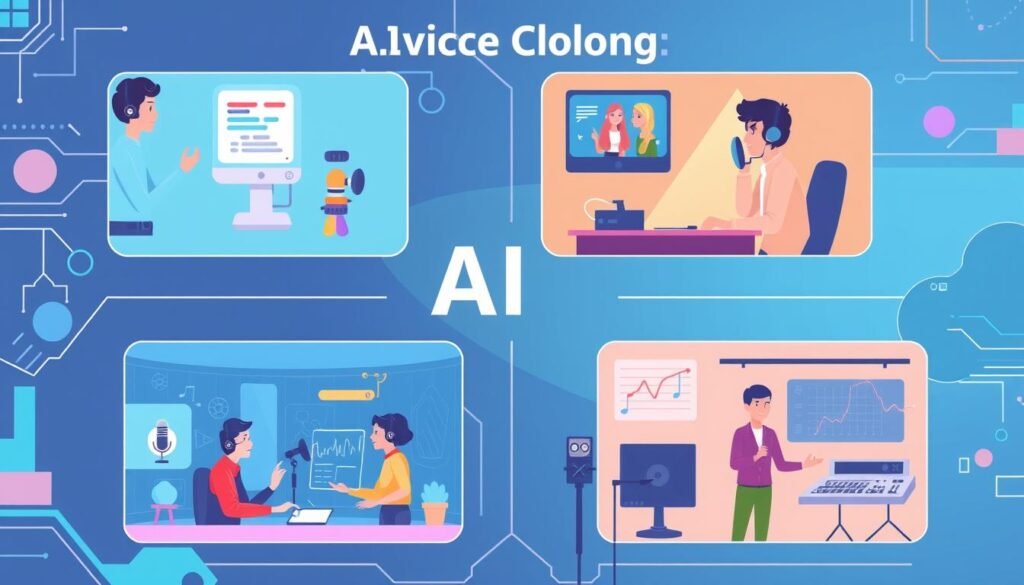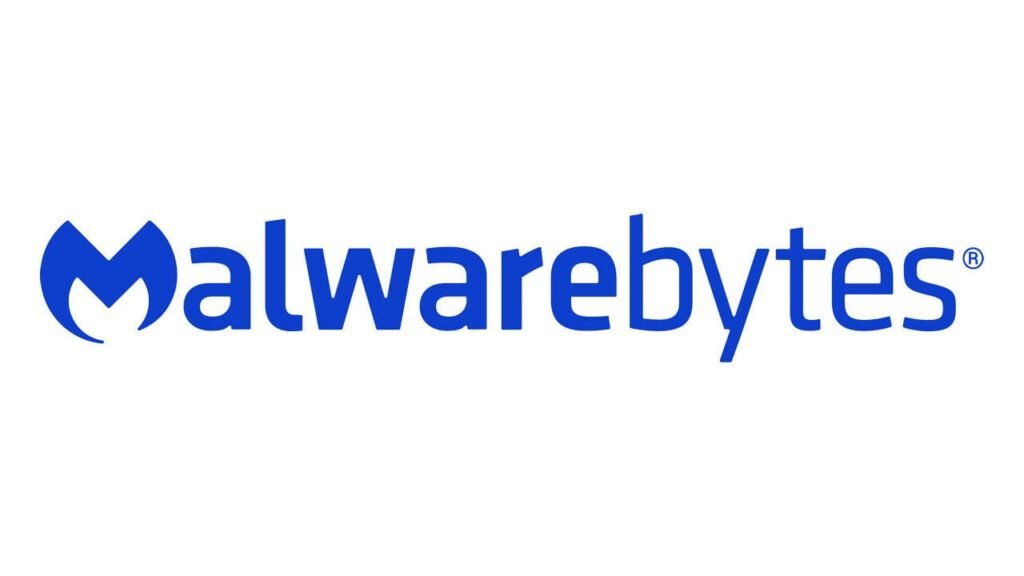Did you know the AI voice cloning market is expected to hit $3.1 billion by 2028? This huge growth shows how much people are interested in AI, especially voice cloning. Now, thanks to better technology, you can make your own AI voice for marketing, customer service, and fun.
This article will teach you how to clone your voice with easy tools and tips. Voice cloning lets you share your voice in new ways, making projects better and more consistent. With tools like Descript, you can make a voice clone in minutes. It's simple to do by just reading a short script.
As AI voice cloning gets better, it's key to know the latest tools and tips. You're about to learn how to use this cool tech to make your projects and talks better.
Key Takeaways
- AI voice cloning can change how we talk in many fields.
- Descript has a free tool for easy voice cloning.
- Creating a voice clone needs just a short script.
- Today's tools make voice cloning more accurate and quality.
- AI voices can make marketing more personal.
- It's important to know the law when using voice cloning.
Introduction to AI Voice Cloning
AI voice cloning is where tech meets creativity. It uses artificial intelligence to copy someone's voice. This is done through advanced speech synthesis.
By analyzing audio samples, AI can mimic unique voices. This is useful in sales, marketing, and customer service. It makes interactions more personal and relatable.
AI voice cloning works by converting text to speech. It started with text-to-speech systems and has grown a lot. Now, AI models like recurrent neural networks (RNNs) can create very realistic voices.
These voices can be customized for different needs. This makes the experience more tailored to the user.
AI voice cloning has many uses, like in content creation and music. It's also cost-effective because it makes production easier. But, it raises ethical questions about how it should be used.
Tools like LOVO AI let users create their own voice clones. Just a few minutes of voice samples are needed. This technology is becoming more popular, with the voice recognition market expected to hit $27.16 billion by 2025.
Understanding Voice Cloning Technology
Voice cloning technology is a new area in AI voice synthesis that's changing many fields. It uses machine learning to study and mimic a person's voice. This includes their tone, pitch, and speed.
This tech captures the small details of a voice to make digital copies that sound real. It's a big change from old methods that just pieced together speech snippets.
Now, tools like ElevenLabs have made huge strides. They can make voices sound almost like the real thing. These tools study natural speech patterns to get every detail right.
The growth of voice cloning tech is impressive. It can now mimic voices in 29 languages, thanks to ElevenLabs. You can choose quick cloning with just a minute of audio or go for a more detailed version that takes up to 30 minutes.
| Feature | Instant Cloning | Professional Cloning |
|---|---|---|
| Sample Duration | 1 minute | 30 minutes |
| Cloning Duration | Minutes | Approximately 4 weeks |
| Language Support | 29 languages | 29 languages |
| Output Quality | High Quality | Professional Quality |
As AI voice synthesis grows, so do its uses. It's key in customer service, digital helpers, and making media. But, there are also worries about ethics. It's important to make sure people agree to use their voices and to prevent misuse.
Learn more about keeping voice data safe in the detailed guide by Software and Learning here.
In short, voice cloning tech is making virtual interactions more like real ones. By focusing on quality and ethics, we can make the most of this technology's future.
How to Clone Your Voice with AI: Tools and Tips
Exploring AI voice cloning opens up new possibilities. Many tools and tips are available to help you. Whether you want to create engaging content or boost your digital presence, there are AI voice cloning tools for every need.
Overview of Popular AI Voice Cloning Tools
Several AI voice cloning tools are popular among creators and businesses. Speechify AI Voice Cloning, Descript, and Amplemarket are leaders in the market. They help you create voices that sound like you, making it easy to use in different ways.
Key Features to Look for in Voice Cloning Software
When looking at AI voice cloning tools, some key features stand out:
- Ease of use: Choose tools with simple interfaces to make voice cloning easy.
- Processing speed: Fast processing lets you work quicker, focusing on creativity.
- Voice quality: High-quality voices are essential for a natural sound in your projects.
- Compatibility: Make sure the software works on different platforms for easy use.
Understanding these features helps you choose the right tool, improving your voice cloning experience.
| Tool | Key Features | Languages Offered | Customization Options |
|---|---|---|---|
| Speechify | Over 200 natural voices, audio editing capabilities | Multilingual support | Speed, pitch, tone adjustments |
| Descript | Easy voice recording, editing features | Wide range, depending on voice packs | Custom voice training |
| Amplemarket | Direct integration capabilities, CRM features | Multiple languages available | Branded voice models |
Step-by-Step Guide to Voice Cloning
Starting your voice cloning journey might feel overwhelming. A detailed guide can make it easier. It helps you get your voice samples ready and record them well. Quality matters a lot, especially in your recordings.
This part will cover how to prepare your voice sample and get the best recording. You'll learn how to make sure your audio is accurate.
Preparing Your Voice Sample
Before you start recording, plan out your voice samples. Here are some key steps:
- Choose scripts that show different emotions and tones.
- Record in a quiet, treated space to cut down background noise.
- Try to record at least 30 minutes of good audio. Aim for 3 hours for the best results.
- Make sure your sample has clear audio of just one speaker. No music or sound effects.
Recording Techniques for Best Results
Good recording techniques are key to a great voice clone. Follow these tips for the best results:
- Use professional gear like XLR microphones and pop-filters.
- Keep your volume steady between -23dB and -18dB RMS. True peak should be -3dB.
- Speak naturally, changing your tone and pace. Make sure to pronounce words correctly.
- Choose a spot without echoes and use soundproofing if needed.
| Parameter | Recommended Values |
|---|---|
| Recording Time | 30 minutes (minimum), 3 hours (ideal) |
| Volume Level | -23dB to -18dB RMS |
| True Peak Level | -3dB |
| Voice Clarity | Single speaker, no background music |
| Recording Environment | Quiet, acoustically-treated room |
Start with these basic steps to prepare your voice samples and record them well. This ensures you give the best audio for your voice cloning project.
Using Descript for Voice Cloning
Descript has changed the game in voice cloning since 2018. It lets you create your own AI speaker easily. You can make high-quality synthetic voices in just 60 seconds. This makes your AI speaker truly unique.
Creating Your AI Speaker
To begin, upload a voice sample. Descript trains the AI to match your voice by reading a script. After that, it creates a synthetic voice that captures your speech's tone and rhythm. This makes your AI speaker sound more real.
Processing Your Voice Sample
Descript's advanced features let you turn written scripts into speech in your voice. It also has tools like overdub to fix errors. This makes creating video content with your AI speaker easier. Your AI can speak many languages and express different emotions, reaching more people.
Integrating Your Voice Clone into Various Applications
Adding voice clones to your projects opens up many possibilities. The rise of text-to-speech apps shows how much people want to customize and improve communication. With AI voice cloning apps reaching $2.13 billion in 2023, you can use this tech in many parts of your work.
Voice clones are useful in many areas, like:
- Video Production: Using cloned voices in videos can make stories more engaging and relatable.
- Podcasting: AI voices can give your podcast a unique sound that connects with listeners.
- Customer Service Automation: Voice clones can make automated responses feel more human, improving customer experience.
As AI gets better, voice clones sound more natural, making user experiences better. The need for high-quality voice cloning has grown fast. It's used in entertainment, education, and healthcare. Businesses save money and work more efficiently with AI voice tech, needing fewer human voice actors.
| Application Type | Benefits |
|---|---|
| Video Production | Enhanced storytelling, engaging visuals and audio alignment. |
| Podcasting | Unique sound tailored to brand identity, smoother episodic flow. |
| Customer Service Automation | Increased customer satisfaction, efficiency in handling inquiries. |
Using voice clones in these areas can make your work better and more engaging. As you dive into this tech, remember to follow ethical and privacy rules. Make sure your approach respects users' data.
Best Practices for High-Quality Voice Clones
To get high-quality voice clones, it's key to use good voice recording practices. The place you record in and how you speak are very important. This part will talk about picking the best recording space and keeping your speech real.
Choosing the Right Environment for Recording
It's vital to create the perfect audio setting for top-notch voice clones. Here are some tips:
- Soundproofing: Record in a quiet room with no echo or distractions to cut down background noise.
- Equipment: Use top-notch microphones and sound-absorbing materials to boost audio quality.
- Recording Format: Use .mp3 or .wav files with a sampling frequency of 32,000 Hz to 48,000 Hz for the best sound.
For quick cloning, aim for 3 to 5 minutes of clean audio. For detailed cloning, aim for 1 to 2 hours of recording. For even more detailed accents, 4 to 6 hours is best.
Ensuring Natural Speech Patterns
To make your voice clone sound real, focus on how you speak:
- Expressiveness: The more emotional and varied your speech, the more real your clone will sound.
- Consistency: Keep the same tone and pace to help the cloning process.
- Variety: Mix up your speech styles and emotions to make the cloning better.
By following these voice recording tips and aiming for natural speech, you're on your way to making great voice clones.
| Voice Cloning Type | Minimum Audio Input | Ideal Audio Input | Recommended Audio Formats |
|---|---|---|---|
| Instant Cloning | 30 seconds to 5 minutes | 3 to 5 minutes | .mp3, .wav |
| High-Fidelity Cloning | 10 minutes | 1 to 2 hours (up to 6 hours for nuanced accents) | .mp3, .wav |
Common Applications of AI Voice Cloning
AI voice cloning has become a key technology in many fields. It helps businesses improve their operations and connect better with customers. Knowing how it's used can help you use it to your advantage.
Enhancing Customer Interactions
AI voice cloning is great for making customer interactions better. Companies can make voice avatars for their customer service teams. This makes conversations feel more real and personal.
Customers like hearing the same voice from their favorite brands. It makes them feel more connected and builds trust. Using AI voice cloning in customer service boosts efficiency and satisfaction.
Personalized Marketing Strategies
AI voice cloning is also a powerful tool for marketing. Brands can create voice messages that speak directly to their audience. This creates stronger connections and boosts engagement.
Using unique voices in ads, voice responses, or outreach can make a big difference. It makes your messages stand out and memorable. This can lead to more sales and conversions.
The Future of Voice Cloning Technology
The future of voice cloning technology looks bright, thanks to AI advancements. Tools like LOVO, used by over 2,000,000 people, are changing how we talk. This change is happening fast in many fields.
Now, we can clone voices in real-time. This opens up new uses like voice assistants and chatbots. It also helps those who struggle to speak. The quality of these voices is getting better fast.
Play.HT has made it easier to start using voice cloning. You only need 30 seconds of audio, down from 30 minutes before. This makes voice technology more available to everyone.
Deep fake audio has come a long way since 2017. Back then, it was only for famous people. Now, it's easy to make fake audio of anyone. This growth brings both benefits and risks, like spreading false information.
There are many voice cloning platforms out there. Some need just a minute of audio, while others want more. Prices vary too, from free to over $1,000 a month. This means there's something for everyone, depending on what you need.
| Platform | Audio Training Sample | Monthly Cost |
|---|---|---|
| LOVO | 1 minute | Free trial available |
| ElevenLabs | 5 minutes | $99 (Independent Publisher) |
| Play.HT | 30 minutes | $29.25 (monthly) |
| Descript | 30-180 minutes | $24 (monthly) |
| Resemble.ai | 5 minutes | $1,000 (monthly) |
As voice cloning gets better, it will change how we communicate. Soon, these tools might be even more common. They could change how we talk to each other in everyday life.
Conclusion
AI voice cloning is changing how we use our voices in different ways. Today's tools let you make a digital voice clone that's yours alone. This can make talking to customers better and make marketing more personal.
Creating your digital voice takes a few important steps. This ensures your voice clone sounds just like you. With new tech, voices sound more real than ever. You can try tools from Descript, ElevenLabs, Play.ht, and Resemble AI to see what works for you.
Understanding AI's role in our lives helps us see its value. Voice cloning can boost your work and personal projects. The future of voice tech looks bright, with more personal and accessible ways to talk.







